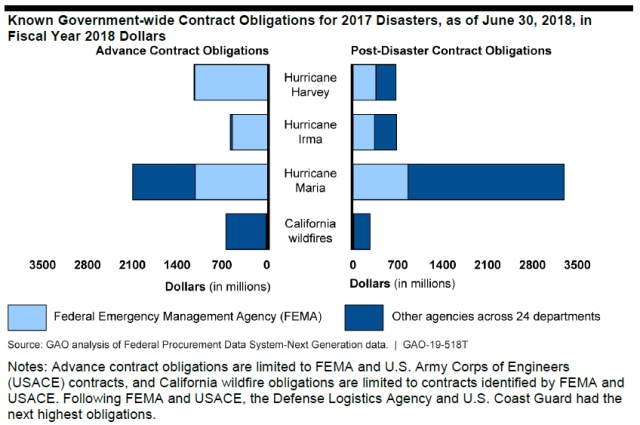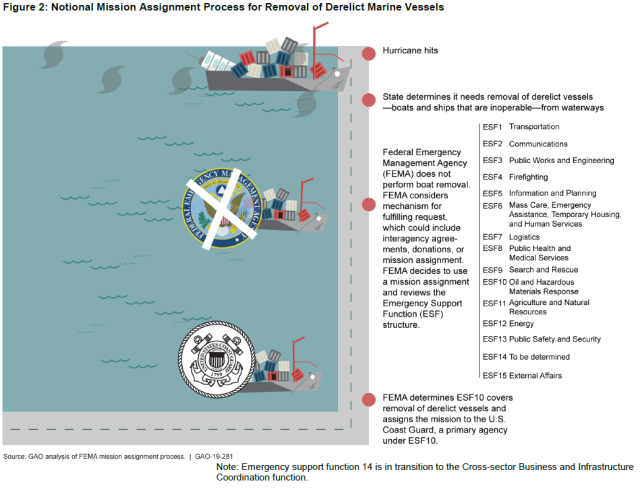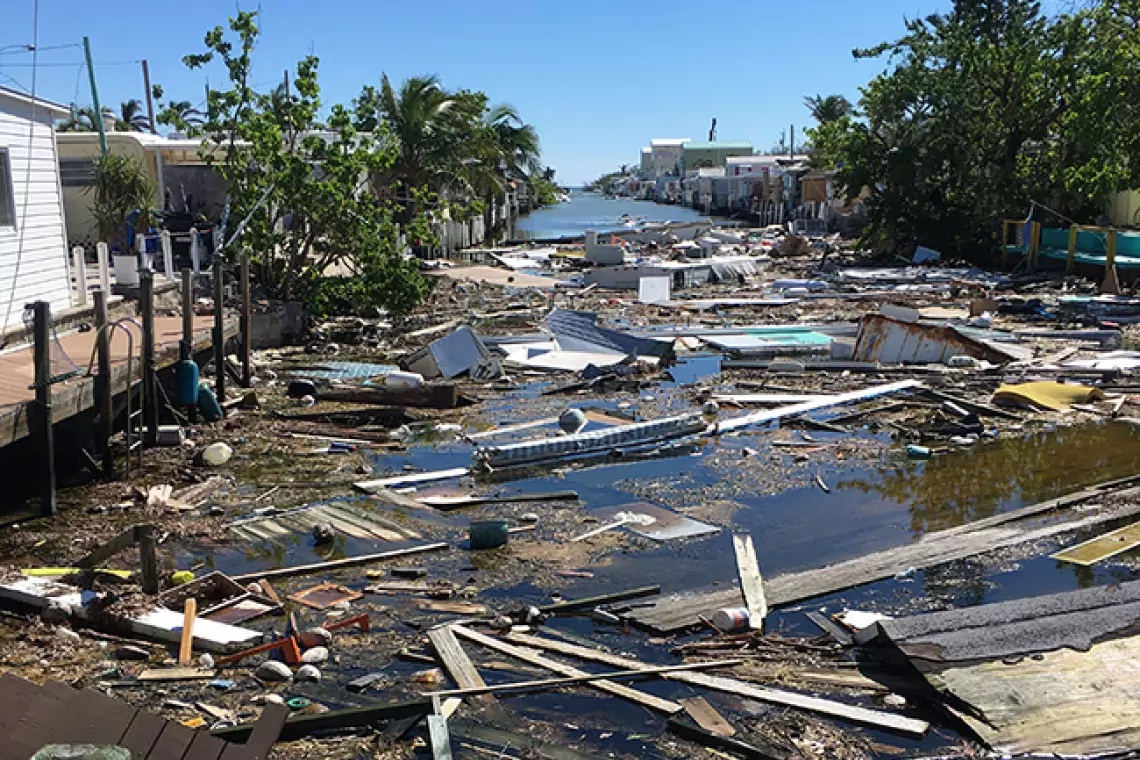Contracting for Disaster Response and Recovery
In 2017, 3 hurricanes—Harvey, Irma, and Maria—and the California wildfires caused widespread damage and affected 15% of the nation’s population. Federal agencies often rely on contracts to provide necessary goods and services to survivors in the aftermath of such catastrophes.
In today’s WatchBlog, we explore how federal agencies use contracts when responding to natural disasters, key challenges the agencies have faced, and how they can improve for future disasters.
Role of contracts in disasters
The Federal Emergency Management Agency and U.S. Army Corps of Engineers use a number of advance contracts—established before disasters occur—to quickly respond after a disaster with critical goods and services, such as meals, roofing materials, and debris removal.
FEMA, the Army Corps, and other agencies also award certain contracts after disasters occur. For example, the U.S. Coast Guard awards contracts to remove boats or ships damaged by storms.
Federal agencies obligated at least $9.5 billion on contracts in response to the 2017 hurricanes and wildfires.
Coordinating response efforts
When disasters strike, state and local governments are generally the first responders. When needs exceed their resources, they notify FEMA—the lead agency for coordinating federal disaster response. FEMA can address the needs directly or use mission assignments, which are work orders issued to other federal agencies allowing them to perform certain disaster response activities.
Following the 2017 disasters, FEMA faced challenges coordinating with local, state, and federal partners.
For example:
- FEMA didn’t offer clear, consistent guidance to contracting officers on coordinating with states and localities over advance contracts, which could hinder FEMA’s efforts to avoid overlap between state and federal contracting efforts after a disaster.
- FEMA didn’t have a centralized, up-to-date resource for identifying its advance contracts to let states and localities know what is available to them.
- FEMA’s mission assignments didn’t offer clear guidance related to contracting considerations to other coordinating federal agencies when assigning responsibilities during disaster response.
Planning for contracting needs
In addition to the coordination shortcomings we found in FEMA’s use of contracts, we found problems with the agency’s assessments of its contracting workforce.
FEMA has identified contracting workforce shortages as a continuing challenge to its disaster response and recovery efforts. However, we found that 8 of FEMA’s 10 regional offices have only 1 permanent full-time contracting official, and that the agency hasn’t fully assessed its contracting since at least 2014.
To address these and other issues, we made 9 recommendations to FEMA to address shortfalls in its advance contracting process. We also made 10 recommendations to FEMA and other agencies to address challenges with post-disaster contracts.
To learn more, read our full December 2018 and April 2019 reports.
- Comments on GAO’s WatchBlog? Contact blog@gao.gov.
GAO Contacts
Related Products

GAO's mission is to provide Congress with fact-based, nonpartisan information that can help improve federal government performance and ensure accountability for the benefit of the American people. GAO launched its WatchBlog in January, 2014, as part of its continuing effort to reach its audiences—Congress and the American people—where they are currently looking for information.
The blog format allows GAO to provide a little more context about its work than it can offer on its other social media platforms. Posts will tie GAO work to current events and the news; show how GAO’s work is affecting agencies or legislation; highlight reports, testimonies, and issue areas where GAO does work; and provide information about GAO itself, among other things.
Please send any feedback on GAO's WatchBlog to blog@gao.gov.







